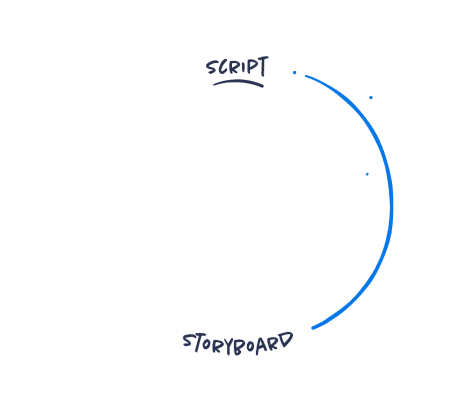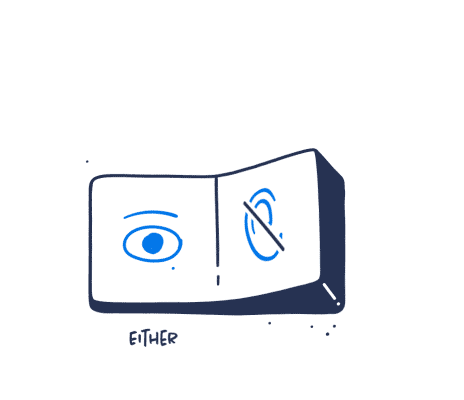The Notebook
on Animation
Hard-earned insights from our notebook
about animation and explainer videos.
Hands-on, honest and condensed.
Revisit the script
The voice-over and visuals need to work hand in hand and cannot be viewed as separate entities. Collaboration between the copywriter and storyboarder is essential to make it work. It’s an ever-evolving process where pictures influence words and words influence pictures. Revisiting the script and continuously refining the relationship between design and writing is crucial for creating a cohesive and impactful explainer video.

Don’t skip the animatic
Animatics are like a blueprint for your project. They can reveal what works and what doesn’t, giving you a first impression of what your final product will be like. Even in low-budget projects, animatics are a good investment. In most cases, creating an animatic will not cost you time but will ultimately save you time – and, more importantly, it will also improve the quality of the entire piece.

Design and writing are intertwined
Explainer videos include both voice-over and visuals. These are closely intertwined and can’t be separated from each other. The copywriter and storyboarder need to collaborate closely for a successful outcome – both in the early and later stages of the process. The writer needs to think visually and the designer needs to think textually. Ever evolving. Pictures move words, words move pictures.

Balance the rational with the emotional
Even if your content is based on cold numbers and facts, it still shouldn’t be dry. Your video needs to evoke emotions in order to resonate with your audience. The best explainer videos strike a balance between rational information that needs to be conveyed and the emotional attachment (e.g. story, humour etc.) an audience has to the visual depiction.

Avoid clichés
Visual clichés are images that have been overused to the extent that they have lost their intended meaning. Often, they appear to be vague and unfocused, and they lack the necessary clarity to effectively communicate your message. Examples of visual clichés include a light bulb, gears or a jigsaw piece. Avoid these tired clichés and opt instead for more distinctive and accurate visual representations.

Start by sketching fast and ugly
Follow your instincts to jot your rough ideas down on paper. See if it works; if not, try something else. You don’t have to have everything figured out just yet. Sketching fast and ugly is the most efficient way to identify your core visual concept for the video, as you can
quickly explore various visual concepts and decide on the most effective one for your explainer video.

Don’t make your audience read and listen at the same time
You can use both voice-over or on-screen text, but not both simultaneously unless the wording is identical and the timing well-planned. To prevent overwhelming your audience, incorporate pauses into your voice-over if your video has on-screen text that is not in the voice-over.


